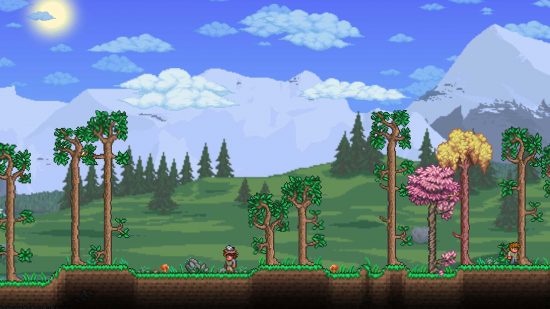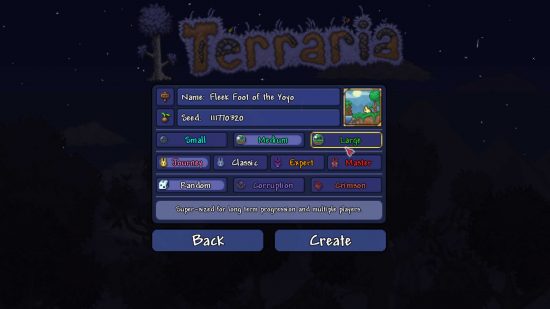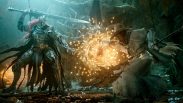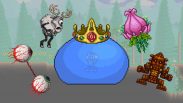How big is the Terraria map? It’s a complicated landscape comprised of randomly-generated space. Unique characteristics separate the lot; from the terrain and its denizens to the valuable loot you’re able to find nestled within. With it changing over time as you defeat powerful enemies, it only gets harder to understand as you progress deeper into its dank caverns and twisting tunnels.
Whether you’re looking to learn more about the Terraria map in your first play session or your 50th, there’s always more to read up about. We won’t go into every tiny detail to keep things simple and easy to understand, but you’ll want to load up the Terraria bosses guide and the Terraria happiness guide to add a bit of additional context. And if you want to spice it up for another run, the best Terraria mods are worth thinking about.
How big is the Terraria map?
The size of a Terraria map depends entirely on the setting you choose when generating it. You have three options, with your selection affecting the size of the created world in terms of the following tile sizes:
- Small – 4200 x 1200
- Medium – 6400 x 1800
- Large – 8400 x 2400
Is the Terraria map randomly generated?
Yes, just like the voxel mainstay it’s primarily inspired by, the Terraria map is generated entirely at random. Once you click to create a new world, it’s all built from scratch using a certain set of rules.
You’ll always find the same biomes with enough searching, but they’ll never be in the same place or share the same layout as another world. Your goals will largely remain the same, but how you achieve them will differ slightly because of it.
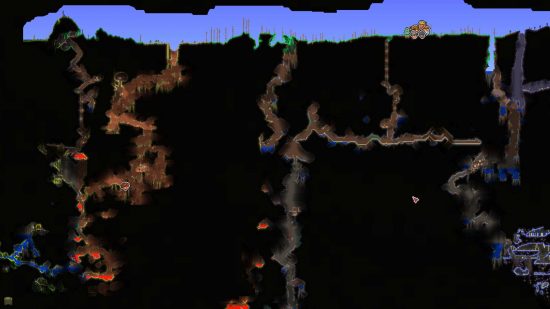
What are Terraria map biomes?
The Terraria map is made up of “biomes” — distinct areas characterized by unique terrain, enemies, items, and more. By understanding what each biome offers, how they look, and the purpose they serve, you’ll be in a better position to search for them and understand how best to navigate them.
Certain materials can only be collected in specific biomes, and particular bosses can only be triggered and summoned by completed sub-tasks in their corresponding areas. Without understanding Terraria map biomes, you’ll struggle to complete the game.
All Terraria map biomes
The Terraria map can be split into two distinct categories: surface biomes and underground biomes.
As the naming would suggest, surface biomes are generated on the surface level with the sky visible above, whereas underground biomes typically start to become visible as you dig beneath the surface.
An underground biome type cannot generate on the surface, nor can a surface biome generate underground.
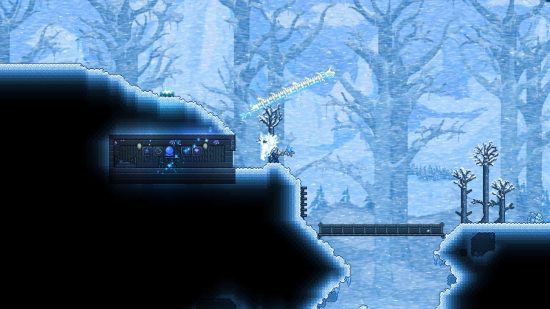
Surface biomes
Glowing Mushroom
- This man-made biome can be fostered by planting Mushroom Grass Seeds, eventually growing into a great place to harvest particular items and craftable equipment.
Dungeon
- Coded to appear on the opposite side of the Jungle biome relative to your initial spawn point, the Dungeon stands out with its blocky entrance and mysterious Old Man. It runs all the way down to the Underworld, featuring unique rewards, powerful items, and the means to summon the Skeletron boss.
Ocean
- Easily identified as a large body of water, the Ocean biome can serve as a great fishing spot, a spawn point for the Duke Fishron boss, or a place to farm some enemies unique to its depths.
Jungle
- The vast Jungle biome is easily noted by its dense vegetation and tree-laden backdrop. Great for gathering wood and other natural materials, it’s reliably found on the same side as the Desert.
Corruption
- One of the two possible evil biomes, the Corruption runs mostly straight down, with Demon Altars and Shadow Orbs being exclusive to it. It plays a key part in progressing into Hardmode.
Crimson
- One of the two possible evil biomes, the Crimson zigzags through the terrain beneath, with Crimson hearts and Crimson altars not only offering powerful equipment when broken but necessary for summoning a boss required for the Hardmode unlock.
Snow
- Always found on the opposite side of the much hotter Jungle biome, the snow biome typically serves to signal the Ice biome’s proximity beneath.
Desert
- Often the place of many early scuffles, the Desert biome isn’t always limited to just one; though there’s no guarantee a second will spawn another instance of its underground equivalent.
Forest
- Featuring more colorful flowers and smaller trees than the green-coated Jungle biome, the Forest biome is the most common Terraria map location and often the spawn point of choice.
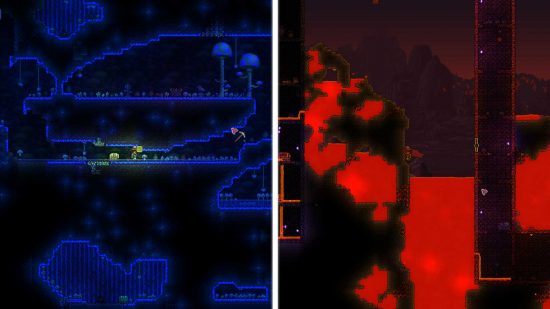
Underground biomes
These biomes largely mirror their surface counterparts, which they’re situated beneath.
Because of their tunnel-life construction, navigating underground biomes is typically far more dangerous than their above-ground versions, with unique enemies often trapping you in small spaces.
Ice
- Featuring Thin Ice coating its underground water reserves, the subterranean equivalent of the Snow biome is generally easier to traverse, with ice-themed items being common in the chests you’ll come across.
Underground Desert
- Located beneath the Desert biome above ground, various agile enemies can spawn in its caverns.
Jungle
- Playing host to the Queen Bee in easy mode and two bosses during Hardmode, this Underground Jungle is an extension of the Surface Jungle, being easily found by digging from one to the other.
Mushroom
- If you’re after Truffle Worms, this is the place to be. Characterized by its signature glowing mushrooms, you’ll know when you come across this area.
Underworld
- Always situated at the very bottom of the map, this biome stretches across the whole y-axis, featuring deadly lava, ruined houses, and the spawn point for the Hardmode-triggering Wall of Flesh boss. Come here to collect Hellstone.
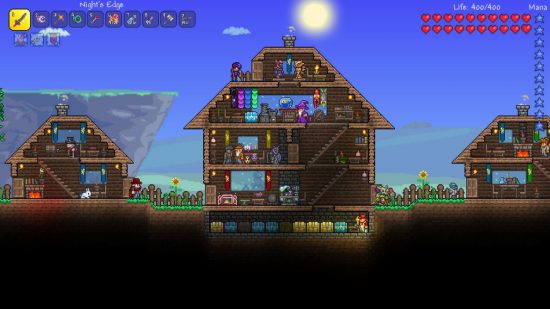
Is the Terraria map different in hardmode?
As soon as hardmode is triggered by defeating the Wall of Flesh boss, the Terraria map will begin to slowly change. This is due to the introduction of new biomes specific to the hard mode experience and the bosses they serve to enable. Both the Surface and Underground will be altered to feature these new biomes.
Hardmode biomes like Corrupted, Hallowed, and Crimson will spawn in the place of previous surface-level Desert biomes, with their altered sand blocks slowly spreading into a nearby ice biome as well.
Need a break from all that knowledge? Get some insight into the game’s development with the anecdote on the Terraria creator’s favorite boss, the new items that stemmed from a forum war truce, and the Terraria collaboration the creator wants the most.
